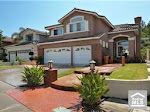Home prices in August rose across a broad swath of large American cities,
adding further evidence that a housing recovery is taking shape.
The Standard & Poor's/Case-Shiller home price index for the 20 largest
metropolitan areas in the country rose 0.9% from July and 2% from August 2011.
It was the fifth consecutive month-over-month increase and the third consecutive
year-over-year bump.
Nineteen areas tracked by the index posted gains over July and 17 posted
year-over-year increases.
The closely tracked index showed home prices down
29.3% from their July 2006 peak. By comparison, prices are down about 0.3% from
January 2009, when
President
Obama took office, indicating most of the declines occurred during the
previous administration.
The recovery since 2009 has been marked by a long bottom. Real estate
initially improved in 2009 and 2010, with help from federal tax credits for
buyers, but then dipped again after those incentives expired. The gains this
year have been fueled by a low inventory of homes for sale, record-low interest
rates and expectations that prices will not drop much further — a combination
many economists predict will continue to fuel improvement.
"In a lot of these markets we are going to continue to see these price
increases," said Jed Kolko, chief economist and head of analytics for real
estate website Trulia.
"On the West Coast, most of the foreclosures are behind us. In California, in
Arizona, in Nevada, most of the foreclosures of the housing crisis have already
happened," Kolko said. "In addition, in some markets, like the Bay Area, Denver,
most parts of Texas, there is pretty strong job growth, which is important for
housing demand."
States where a foreclosure is possible without a court order have seen their
inventories of foreclosed homes fall as investors have snapped up homes to
convert them into rentals or to resell them.
Leading the home price recovery in major metro areas is Phoenix, one of the
places that saw some of the steepest declines during the bust. It posted a 1.8%
gain from July, and its 18.8% increase from August 2011 is the biggest
year-over-year gain among the 20 areas.
Hard-hit Las Vegas, which lagged behind other areas during the bust, was up
1.6% from July and 0.9% from August 2011. California cities have also recovered,
with Los Angeles up 1.3% from the previous month and 2.1% from August 2011, San
Diego up 0.9% from July and 1.9% from August 2011
and San
Francisco gaining 0.5% month over month and 5.3% from a year earlier.
Home prices in the Atlanta area saw a 1.8% uptick from July but were down
6.1% from August 2011. Chicago was up 0.7% month over month but down 1.6% year
over year. The New York area was up 0.7% from July but down 2.3% from a year
earlier.
"Home prices continued climbing across the country in August," said David M.
Blitzer, chairman of the index committee at S&P Dow Jones Indices. "The
sustained good news in home prices over the past five months makes us optimistic
for continued recovery in the housing market."
The Case-Shiller index, created by economists Karl E. Case and Robert J.
Shiller, is widely considered the most reliable gauge of home values.
The housing index compares the latest sales of detached houses with previous
sales and accounts for factors such as remodeling that might affect a house's
sale price over time. The index is a moving average of home sales combining
three months' worth of data — so August's figures are a combination of price
performance in June, July and August.
As the traditionally slower fall and winter seasons begin, the index could
show milder gains or even head toward negative territory again. Many other
factors could hamper a home price recovery, such as another downturn in the
economy, tighter lending standards or a surge in new foreclosures.
Many of the gains seen in housing this year have been dependent on investor
interest in real estate, said Paul Diggle, an economist with Capital
Economics.
"Even with the housing recovery well underway, the share of Americans who own
their own home remains more or less at a 16-year low," he wrote in an emailed
analysis. "This fact is a reminder that, to date, the recovery still owes a lot
to investor demand."
Patrick Newport, an economist with IHS Global Insight, wrote in an email that
he expected prices overall to continue rising moderately for the next five
years. Many homeowners are still behind on their mortgages, he added, which will
keep the recovery a slow one.
"We expect prices to continue rising, but not much faster than inflation,"
Newport's email said. "About 11.6% of homeowners with mortgages are currently
either delinquent on their mortgage or in default, according to data from the
Mortgage Bankers Assn. This overhang is a key reason the housing recovery will
remain slow."
























































































































